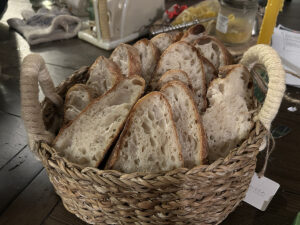One of my favorite times of day has always been sunset. I love the colors and the way that the light plays on world around me. But my absolute favorite part of watching that sunsetting sky is watching the bats start to come out and start their night. I love bats! From the brown bats that we see around most of our homes in the US to the giant flying foxes that I would love to meet in person. Bats are truly amazing creatures.
Just a few quick facts and myths to bust first before we really get into these flying cuties.* No, bats don’t attack people. They try their best to stay away from us. No, bats are not rabid. Less than 1% of bats contract rabies. No, bats are not blind. Most bats have very good eyesight. They use echolocation, sending out soundwaves, to see how big an object is. This is extremely helpful darting through the night sky. No, they are not rodents. Studies have shown that bats may be more closely related to lemurs and they make up about one-fifth of the mammal population on Earth.
While there are over 1,200 known species of bat and they live everywhere but a couple of islands, Antarctica, and in the Artic, I’m going to mostly discuss the ones that I’ve lived near my whole life, the little and big brown bat, and their bug catching ability. These two species live throughout most of the United States. These are just two of the 44 different species of bats that live on this continent.
One little brown bat can consume up to 1,000 mosquito sized insects in an hour. In one night, a nursing mother bat can eat approximately 4,500 insects. The little brown bat likes to live near water, so mosquitos are one of its favorites, but it also enjoys moths, wasps, beetles, gnats, midges, and mayflies. The big brown bat enjoys beetles but eats other flying insects including moths, flies, wasps, and others.

Can you imagine life if we didn’t have these wonderful little creatures to control the insect population? I couldn’t but it could be a possibility in the future. Bat populations are decreasing, and more species are being threatened every day. Myths make bats out to be a threat to us but we, as humans, are the real threat to them. Destruction of their habitats and pollution is hurting the bat colonies.
What can you do to help? Make your property bat friendly. Plant night blooming flowers like dahlia, French marigold, nicotiana, evening primrose, thyme, raspberry, or honeysuckle to attract nighttime insects. While the thought of attracting insects probably doesn’t sound good to you, it sounds great to the bats. Set up bat houses. There are plans all over the internet or check out Lehman’s and their selection of bat houses.
Bats are vital to our environment. We need to educate ourselves and do everything we can to make sure that they stay with us. They are a line of defense against insects taking over the world. Plus, they’re cute.
*Resources used:
Bats
Little Brown Bat
Big Brown Bat
Amazing Bat Facts































